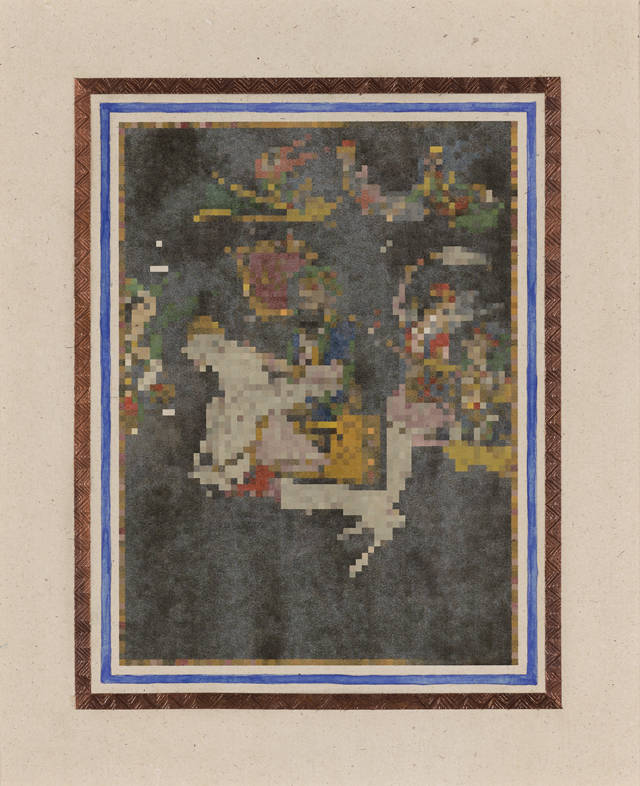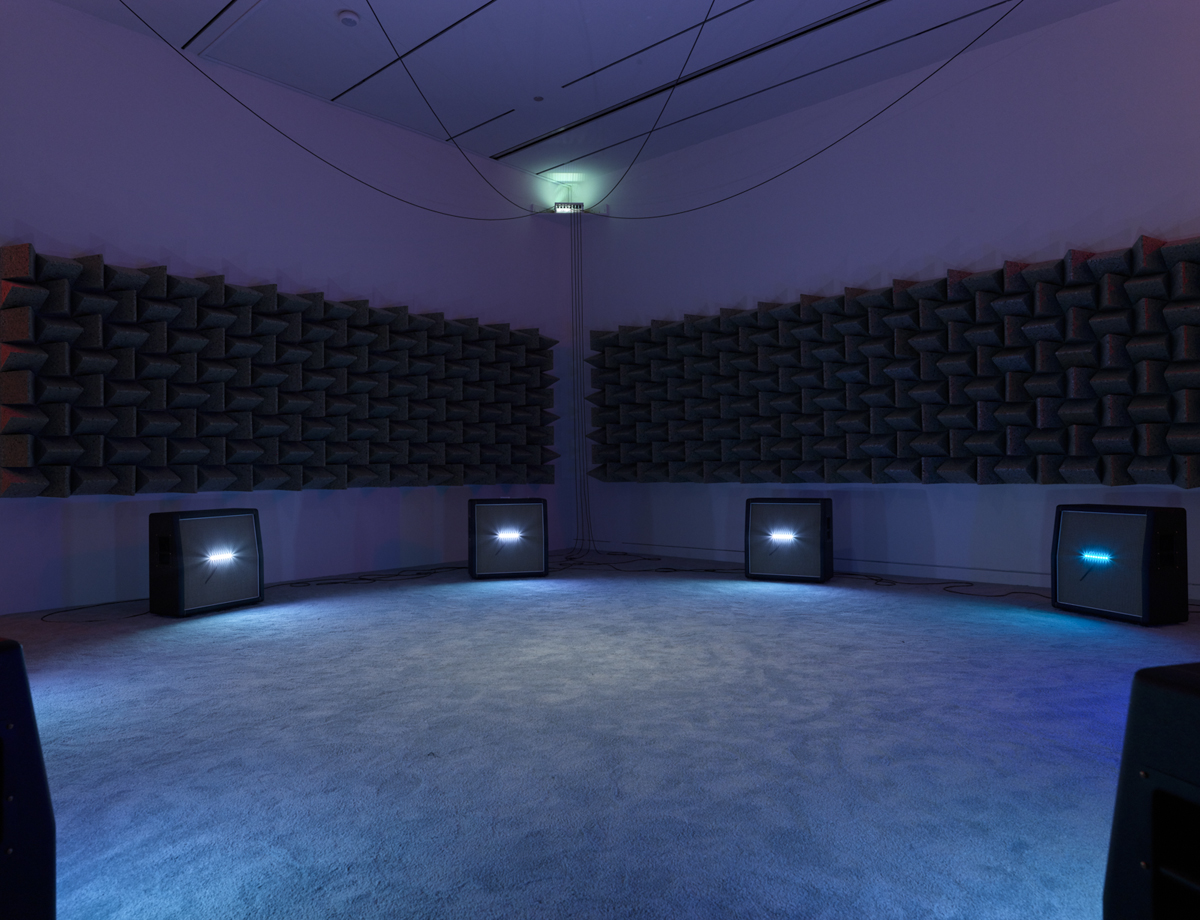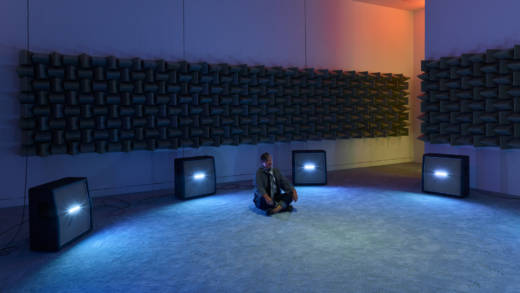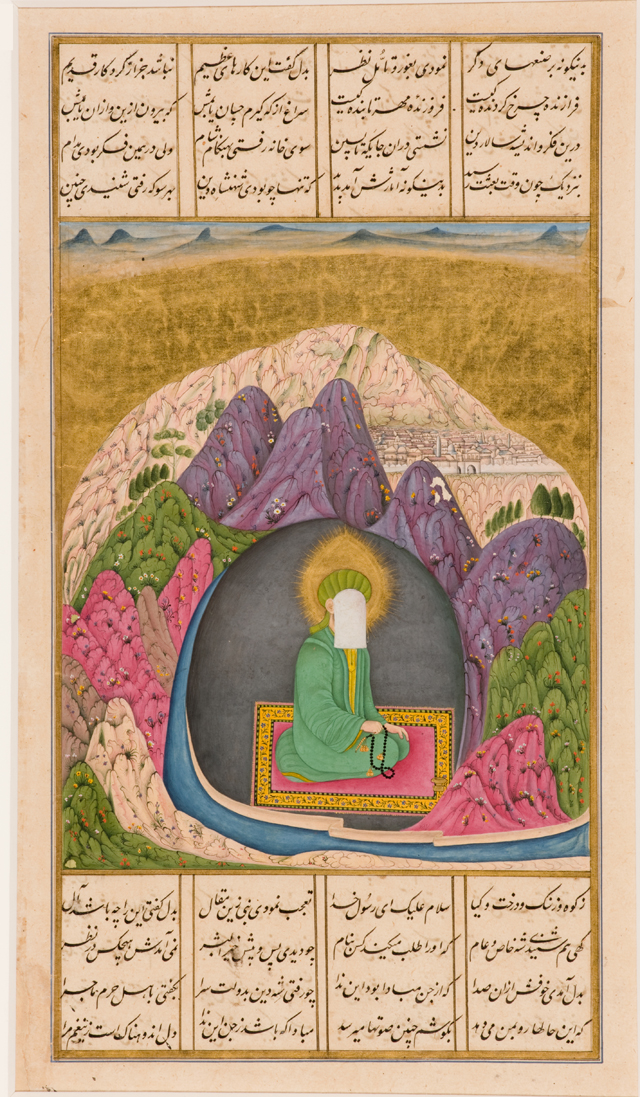San Francisco’s Asian Art Museum has had, until recent years, a somewhat stodgy reputation as a traditional showplace for precious jades, exquisite porcelains and lyrical scroll paintings. There’s nothing wrong with old-school museums, of course—especially for those of us who like looking at beautiful, silent artifacts in relative silence—but AAM has seen the demographic tea leaves, as many have, and has also showed contemporary art for the past several years.
The museum’s latest contemporary art exhibit is Haroon Mirza’s The Night Journey, an immersive light and sound installation based on an early 19th-century Indian miniature painting in the museum’s collection depicting the Night Journey of Muhammad.

According to the Quran and other sources, in 620 or 621, the Prophet Muhammad, accompanied by the angel Gabriel, ascended from Mecca while mounted on a winged, human-headed steed to “the farthest mosque,” in Jerusalem, where he discoursed and prayed with his prophetic forebears. In a second phase of the journey, Muhammad ventured to heaven, hell and to the Lotus of the Utmost Boundary, where he received a revelation about the rituals he should share with his followers. This one-night journey has been interpreted over time both literally and symbolically—as a physical and spiritual quest.
Mirza, a British-Pakistani artist from London, is interested in electronic music, concrete poetry, psychic states, psychedelia and trance music—as well as meditation and Sufi mysticism. For The Night Journey, which was curated by the museum’s assistant curator of contemporary art, Dr. Karin Oen, Mirza scanned and digitized the painting—which, by the way, is not featured in the exhibit, although a few related works are. The result is a sound palette based on the eight colors analyzed by software, transformed into digital sound. (Think of perforated player-piano tapes.)

“Everything is music; music is latent in everyday life,” Mirza says. “What you’re listening to is light; it’s the sound of electricity being made audible.”




